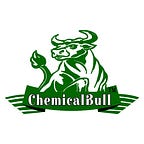Understanding Dipropyl Trisulfide: Properties, Applications, and Health Implications
Dipropyl trisulfide is a chemical compound with the molecular formula C6H14S3. This sulfur-containing compound belongs to the family of organosulfur compounds and is known for its distinctive odor, resembling that of garlic or onions. In this comprehensive blog, we will delve into the various aspects of dipropyl trisulfide, including its properties, synthesis, applications, and potential health implications.
Chemical Structure and Properties
Molecular Structure
Dipropyl trisulfide has a relatively simple molecular structure. It consists of three propyl groups (C3H7) attached to a central sulfur atom. The chemical formula is represented as (C3H7)3S3.
Physical Properties
- Odor: One of the most distinctive features of dipropyl trisulfide is its strong garlic-like odor, making it a key contributor to the aroma of garlic and onion extracts.
- Physical State: It is typically a colorless to pale yellow liquid at room temperature.
- Density: The density of dipropyl trisulfide is around 1.000 g/cm³.
- Boiling Point: The compound has a relatively high boiling point, typically around 217–220°C.
- Solubility: Dipropyl trisulfide is sparingly soluble in water but dissolves readily in organic solvents.
Synthesis of Dipropyl Trisulfide
Laboratory Synthesis
Dipropyl trisulfide can be synthesized through the reaction of propyl halides with alkali metal polysulfides. The following steps are included in the general synthetic route:
- Preparation of Sodium Polysulfide: Sodium polysulfide is prepared by reacting sodium with elemental sulfur.
- Reaction with Propyl Halides: Sodium polysulfide is then reacted with propyl halides (such as propyl bromide or propyl chloride) to yield dipropyl trisulfide and sodium halide as byproducts.
- Purification: The crude product is usually purified through distillation or other suitable methods.
Industrial Production
On an industrial scale, dipropyl trisulfide is often produced as a byproduct during the steam distillation of garlic or onion bulbs. This natural source extraction is a significant contributor to the commercial availability of the compound.
Applications
Flavor and Fragrance Industry
The primary application of dipropyl trisulfide lies in the flavor and fragrance industry. Its strong garlic-like odor makes it a valuable component in the formulation of garlic and onion flavors. Food products, seasonings, and culinary preparations often utilize dipropyl trisulfide to enhance their aroma profiles.
Agricultural Uses
In agriculture, dipropyl trisulfide has demonstrated insecticidal properties. Some studies suggest its potential use as a natural insect repellent or pesticide. However, further research is needed to evaluate its efficacy and environmental impact.
Health and Medicinal Potential
Research has explored the potential health benefits of dipropyl trisulfide, particularly in the context of garlic. Garlic has been traditionally used for its medicinal properties, and dipropyl trisulfide is one of the sulfur-containing compounds believed to contribute to these health effects. These potential benefits include antimicrobial, antioxidant, and cardiovascular protective properties.
Health Implications
While dipropyl trisulfide is generally recognized as safe when used in food and flavor formulations at appropriate concentrations, excessive exposure or inhalation of high concentrations may lead to health concerns. Some potential health implications include:
Respiratory Irritation
Inhaling high concentrations of dipropyl trisulfide vapor may cause respiratory irritation. Individuals with pre-existing respiratory conditions should be cautious, and proper ventilation should be ensured in industrial settings.
Skin and Eye Irritation
Direct contact with the liquid or vapor may cause irritation to the skin and eyes. Adequate safety measures, including the use of protective equipment, should be implemented in handling scenarios.
Allergic Reactions
As with any chemical compound, individuals may exhibit allergic reactions to dipropyl trisulfide. It is essential to conduct thorough safety assessments and consider individual sensitivities.
Conclusion
Dipropyl trisulfide, with its unique odor and diverse applications, continues to be a subject of interest for researchers and industries alike. Ongoing studies may reveal further insights into its medicinal potential, agricultural uses, and safety considerations. As we navigate the world of chemicals, understanding the properties and applications of compounds like dipropyl trisulfide contributes to informed decision-making and responsible usage in various sectors.
